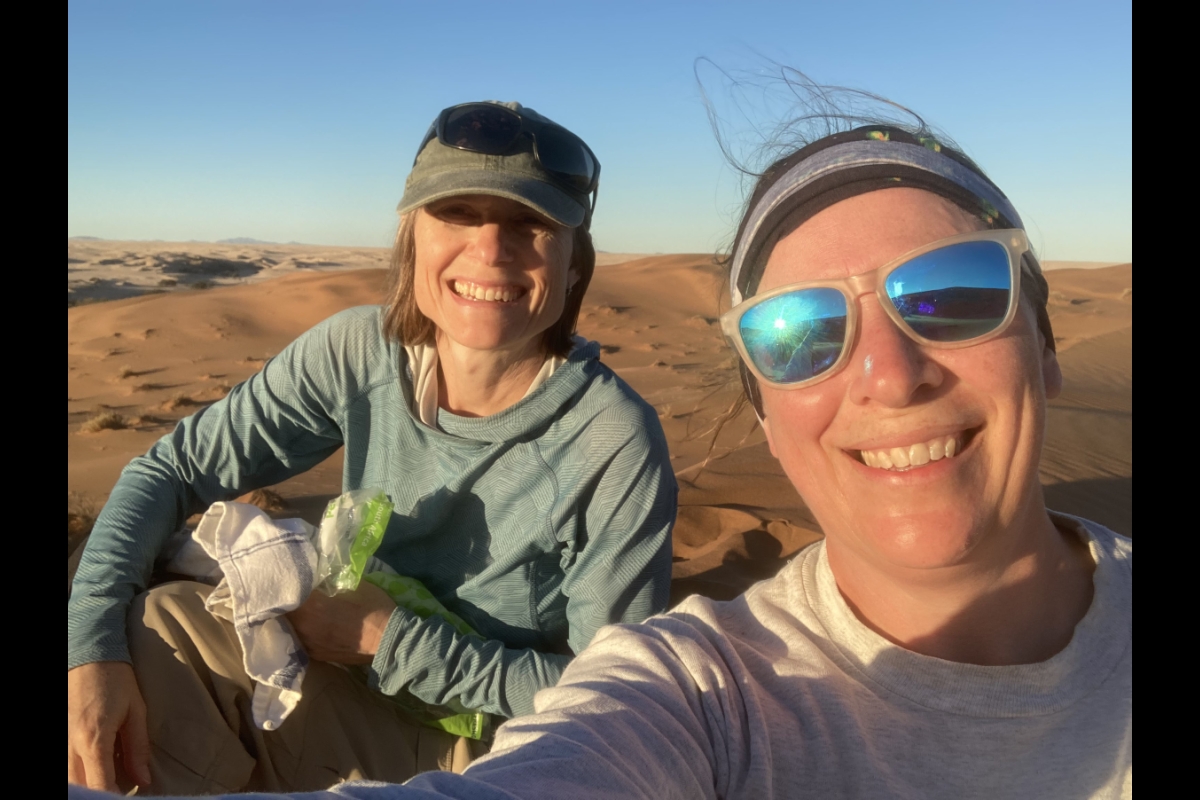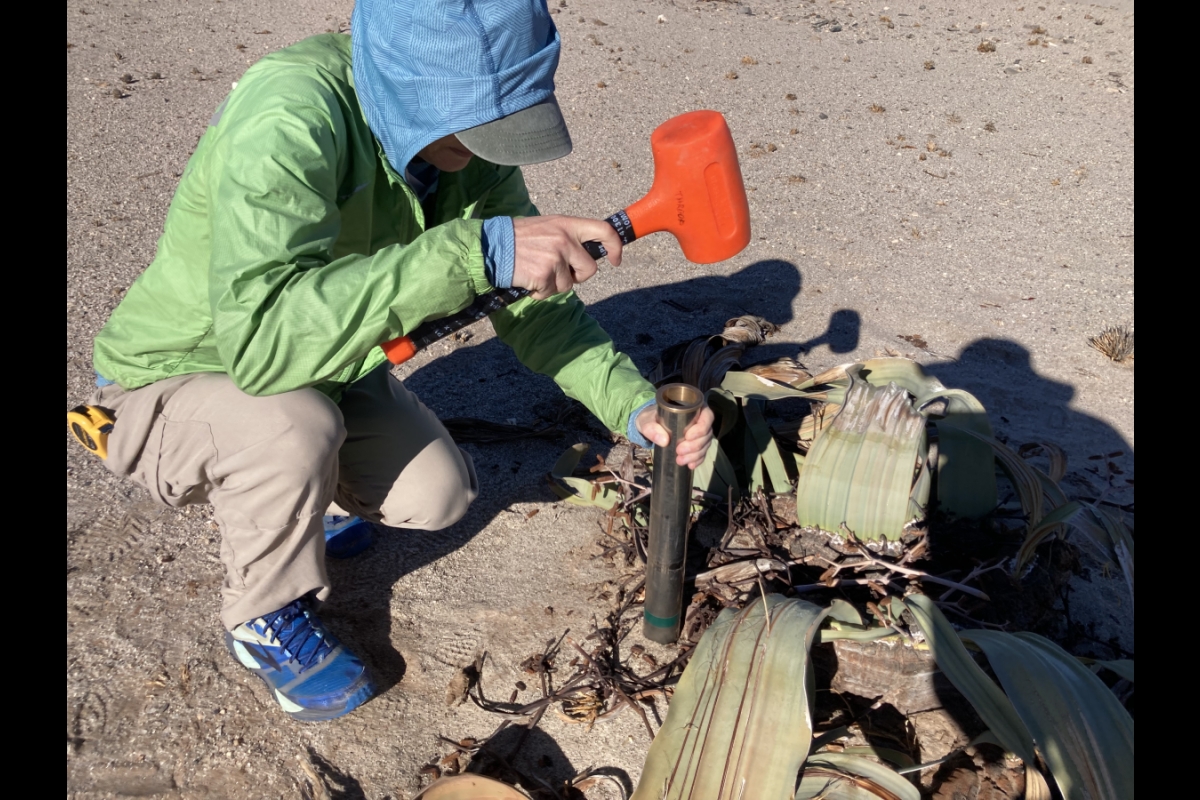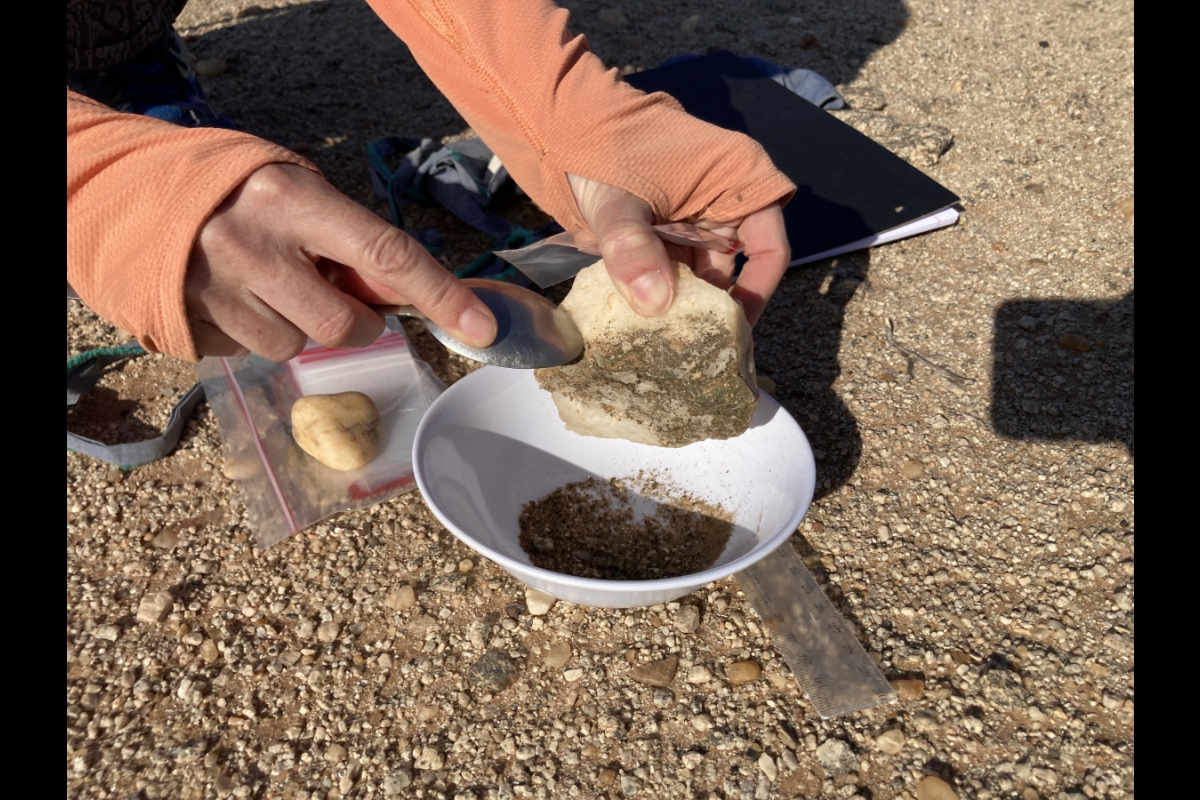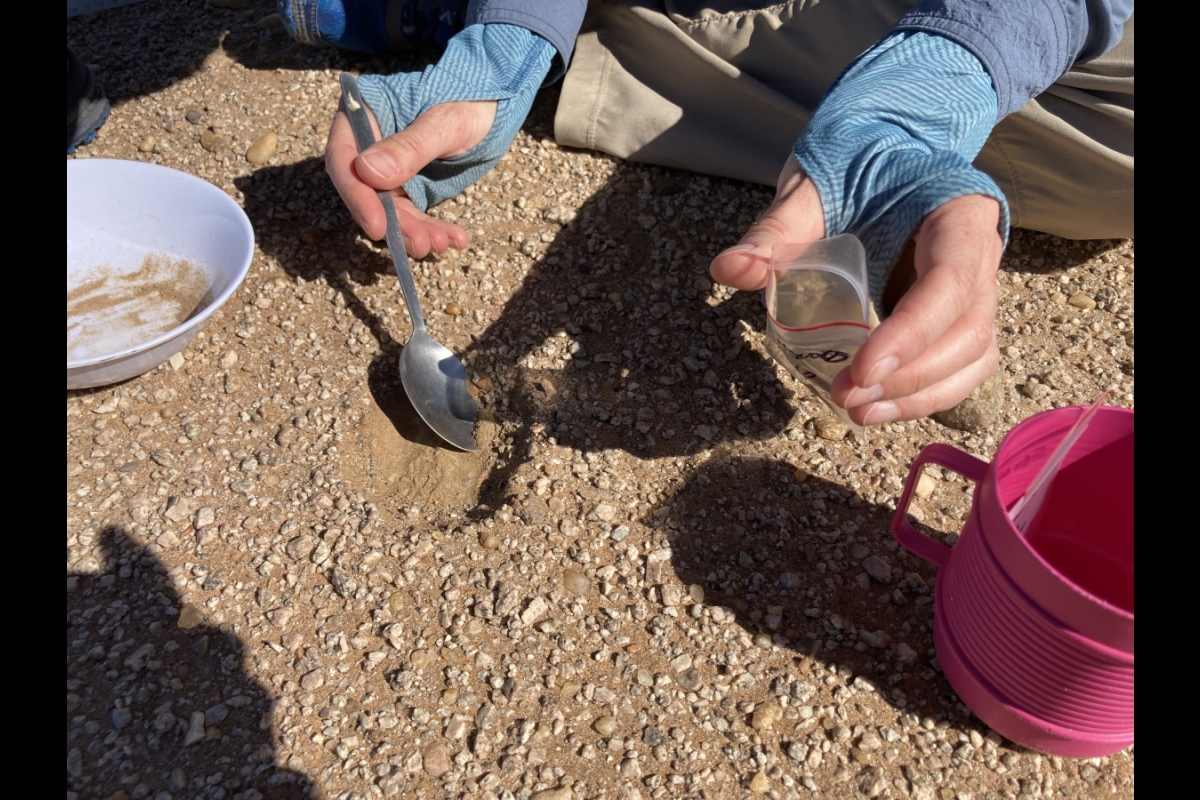
When it comes to carbon collection, quartz rocks
Editor's note: This is the first in a five-part series about ASU faculty conducting summer research abroad.
Soil carbon is like a large reservoir that can keep carbon out of the atmosphere. But how does it work? And how much carbon can the soil collect — especially in remote and extreme ecosystems like the Namib Desert in Africa?
Those are some of the questions that two Arizona State University researchers are trying to answer.
Becky Ball and Heather Throop are spending the summer in Namibia studying patterns of soil carbon in the hyper-arid desert and mentoring undergraduate students in field research.
“We are working to understand how photosynthesis in the Namib puts carbon into the soil,” said Throop, a professor in ASU’s School of Earth and Space Exploration who has worked in Namibia since she was a Fulbright Scholar in 2015.
The Namib, which is largely uninhabited, is considered the oldest and among the driest deserts in the world. It is located along the west coast of Africa and is home to massive sand dunes that the professors must navigate to sample plants. Despite the arid climate, this biological hotspot is home to a variety of plants and animals, which are found nowhere else in the world — including the welwitschia, which can survive for up to 2,000 years.
During their stay, the professors are based at the Gobabeb Namib Research Institute, located in the Namib-Naukluft Park — a site that has enabled decades of research, hosting scientists and training students from around the globe.
“This summer’s field research is about collecting the soil,” said Ball, a professor in ASU’s School of Mathematical and Natural Sciences. “We won’t know what carbon stories we have to tell until we get the samples back to ASU and analyze them.”
Here, Ball and Throop talk about their work on the west coast of Africa.
Question: Explain your research in the Namib Desert.
Throop: We are ecosystem ecologists with a common interest in soil carbon cycling in dryland ecosystems. This means we want to understand how carbon gets put into the soil through photosynthesis, where it goes and how long it stays there.
We are focusing on two unique sources of photosynthesis in the Namib.
Q: Why is this work important?
Ball: The carbon cycle is critical for understanding global climate. Soil is a major storage bank for carbon, globally containing more carbon than the atmosphere and land vegetation combined. It is one of the potential sinks where atmospheric carbon can end up, via photosynthesis and ultimately plant or microorganism inputs into soil. Soil can hold onto that carbon for very long periods of time, making it a longer-term storage bank for that carbon compared to, for example, living plants.
So it’s about holding the carbon rather than holding the heat itself. Carbon dioxide is a greenhouse gas because it can act like a blanket that traps heat near the Earth. Carbon staying in the soil means it is not being released into the atmosphere.
Q: The subjects of your studies are not anything the average person would stumble upon. Can you explain why?
Throop: Looking out over the (desert) landscape, you might not see much plant life or evidence of photosynthesis, but if you flip over a quartz rock … there it is! A little green crust on the bottom of the rock. That green is from cyanobacteria — tiny microorganisms that are pulling carbon from the atmosphere through photosynthesis. Some of this carbon ends up in the soil or available to the rest of the food chain that eats it.
Q: You are focusing on two unique sources of photosynthesis in the Namib. How do they work?
Throop: One is something called hypolithic communities. These are cyanobacteria that make a living in the harsh desert environment by growing underneath quartz rocks. The quartz is translucent enough to let in a fraction of sunlight without exposing the cyanobacteria to the desiccation from the hot, hot sun.
Ball: The other type of photosynthesis we chase is a unique plant called welwitschia. It’s often called a living fossil — a long-lived gymnosperm in the desert. They seem to manage to photosynthesize even when there hasn’t been any rainfall — less than 1 mm in years! That’s carbon being pulled out of the atmosphere even when other plants struggle to do it. When the plant parts fall to the ground, they can become soil carbon.
Q: What is your typical day like?
Throop: We were generally up and at ’em with sunrise to get breakfast. Then we gather our supplies and drive out to the specific research site. That involves a little adventuring in a four-wheel drive truck to access the sites, often through soft sand. We discuss the fine-tuned points about our field plan and begin sampling. We’ll pause for a picnic lunch, then finish sampling. We’re back at Gobabeb by dinner time, often meeting with students or the other scientists in the time before dinner.
There are a lot of Namibian students from the two major national universities working on internships and graduate degrees, as well as students and scientists visiting from South Africa, the United Kingdom, the United States and beyond.
Q: How is your sampling done?
Ball: To take these soil samples, we use pretty simple tools. For the soils under hypoliths where we have to carefully remove 1 mm at a time, we use a very high-tech tool — a spoon! For the soils around welwitschia plants, we use a standard 2-inch diameter soil corer that gets pounded into the soil with a mallet, and then quickly pulled out to collect the soil inside.
We take soil samples from beneath these hypolithic communities growing under quartz and welwitschia plants.
-

ASU researchers Becky Ball and Heather Throop sit on a sand dune in the Namib Desert.
Courtesy photo
-

Heather Troop takes a soil core sample next to a welwitschia plant in the Namib.
Courtesy photo
-

Researchers scrape a hypolithic community off a quartz rock to measure carbon.
Courtesy photo
-

Researchers sample soil beneath a hypolith in the Namib.
Courtesy photo
We already know from Heather’s past research that soil carbon is higher under the hypoliths than bare soil without the quartz. Now, we are interested in how deeply the carbon moves into the soil. So we very carefully take soil samples millimeter-by-millimeter, up to 2 cm total, to measure how deeply that cyanobacterial carbon works its way into the soil.
With the welwitschia plants, we are mainly just interested in how much carbon is put into the soil by these slow-growing plants. We took samples near welwitschia and are comparing that to soil under another dominant plant in the Namib Desert: a species of acacia tree. These are relatives of Arizona’s mesquite trees. Welwitschias are neat plants because they actually have separate male and female plants. So we also took soil samples from male versus the female plants to see whether the female plants, with their different reproductive structures, add more carbon to the soil than the male plants.
Q: What is the best part of the research you do in Africa?
Throop: It is a combination of scientific and human interests. I’m fascinated by understanding how carbon cycling works in such an incredibly dry environment. However, it is the connections with Namibian students and my longtime collaborators that keep me going back to Namibia year after year.
Ball: I love being in unique ecosystems, especially extreme ones that bust the statistics for where life should be able to thrive. It’s so interesting to see how biology manages to keep going even under the harshest circumstances … like finding refuge under a semi-translucent rock and building your own little micro-community. All the processes that make ecosystems function, like photosynthesis and decomposition, happen in their own unique way in extreme ecosystems. To the casual viewer, the Namib Desert would look like a big expanse of mostly nothingness, but it’s actually very heterogeneous and dynamic, and it’s fun to learn how it works.
EIN Presswire does not exercise editorial control over third-party content provided, uploaded, published, or distributed by users of EIN Presswire. We are a distributor, not a publisher, of 3rd party content. Such content may contain the views, opinions, statements, offers, and other material of the respective users, suppliers, participants, or authors.

